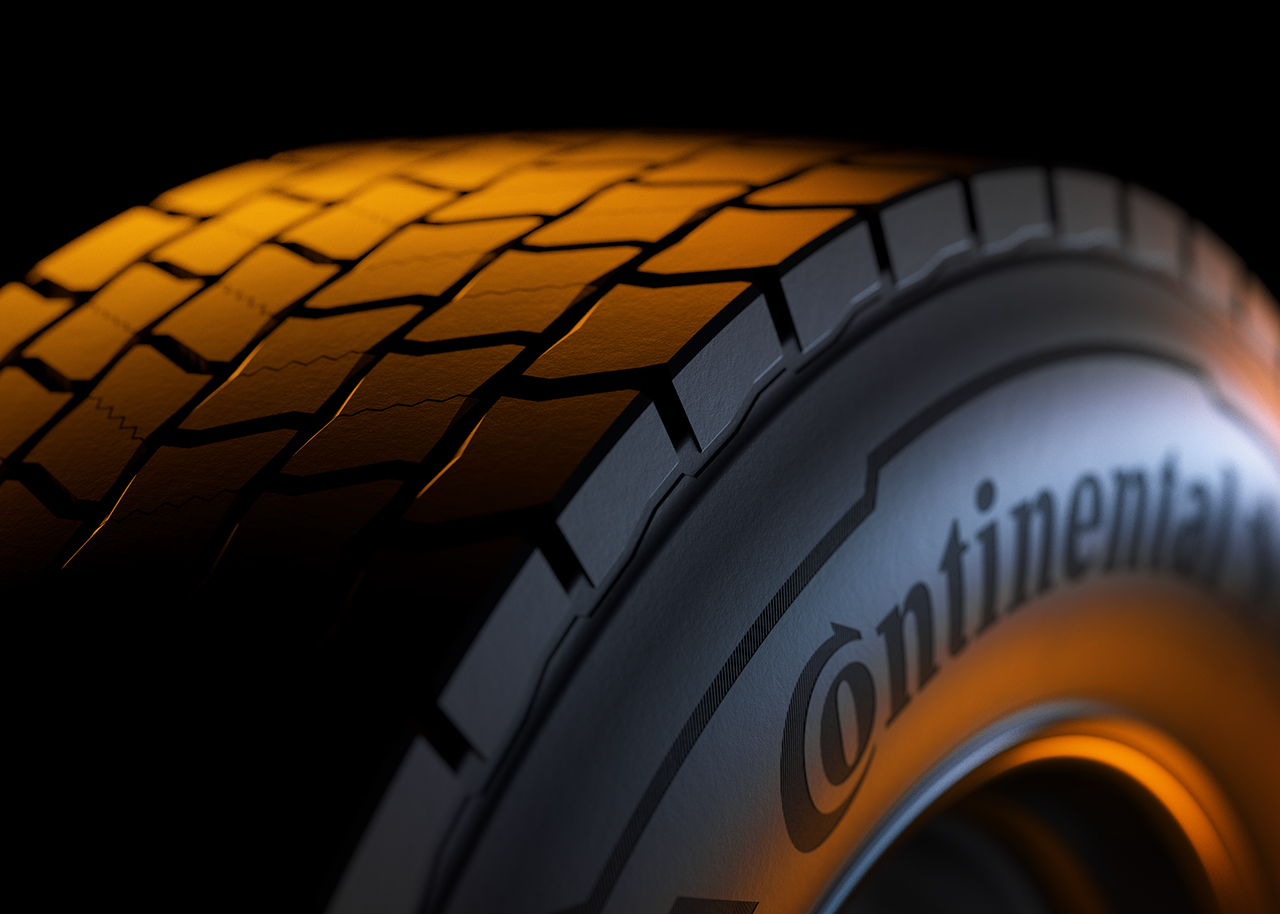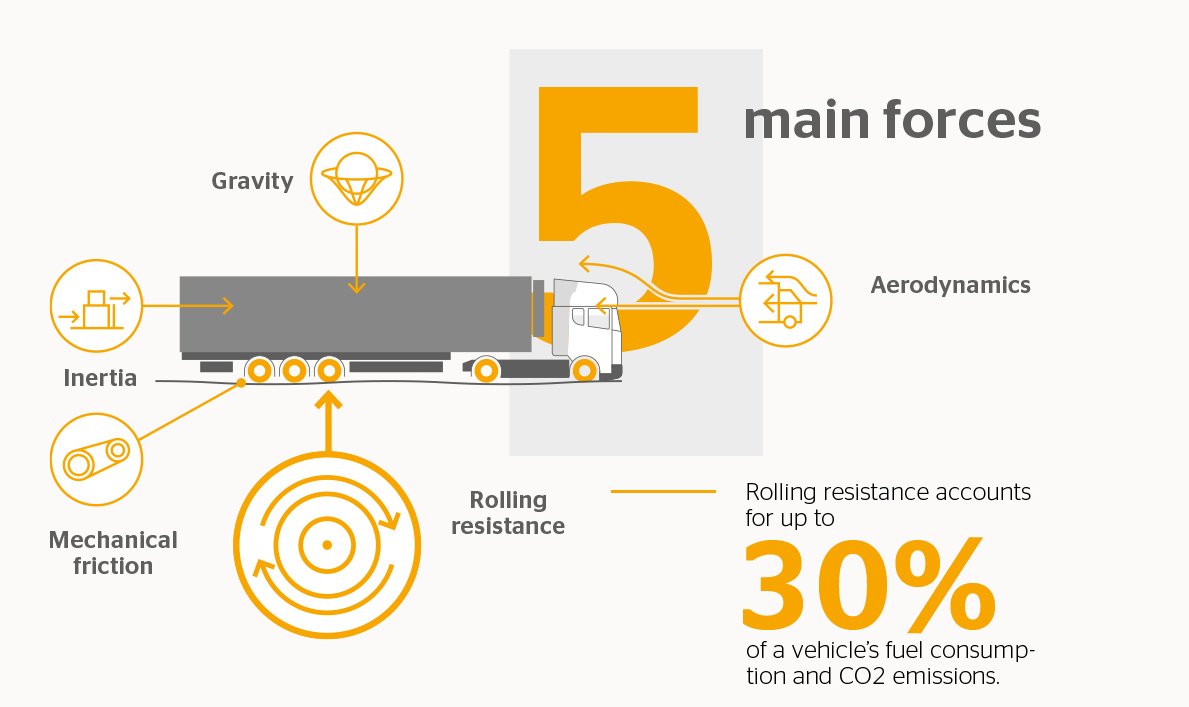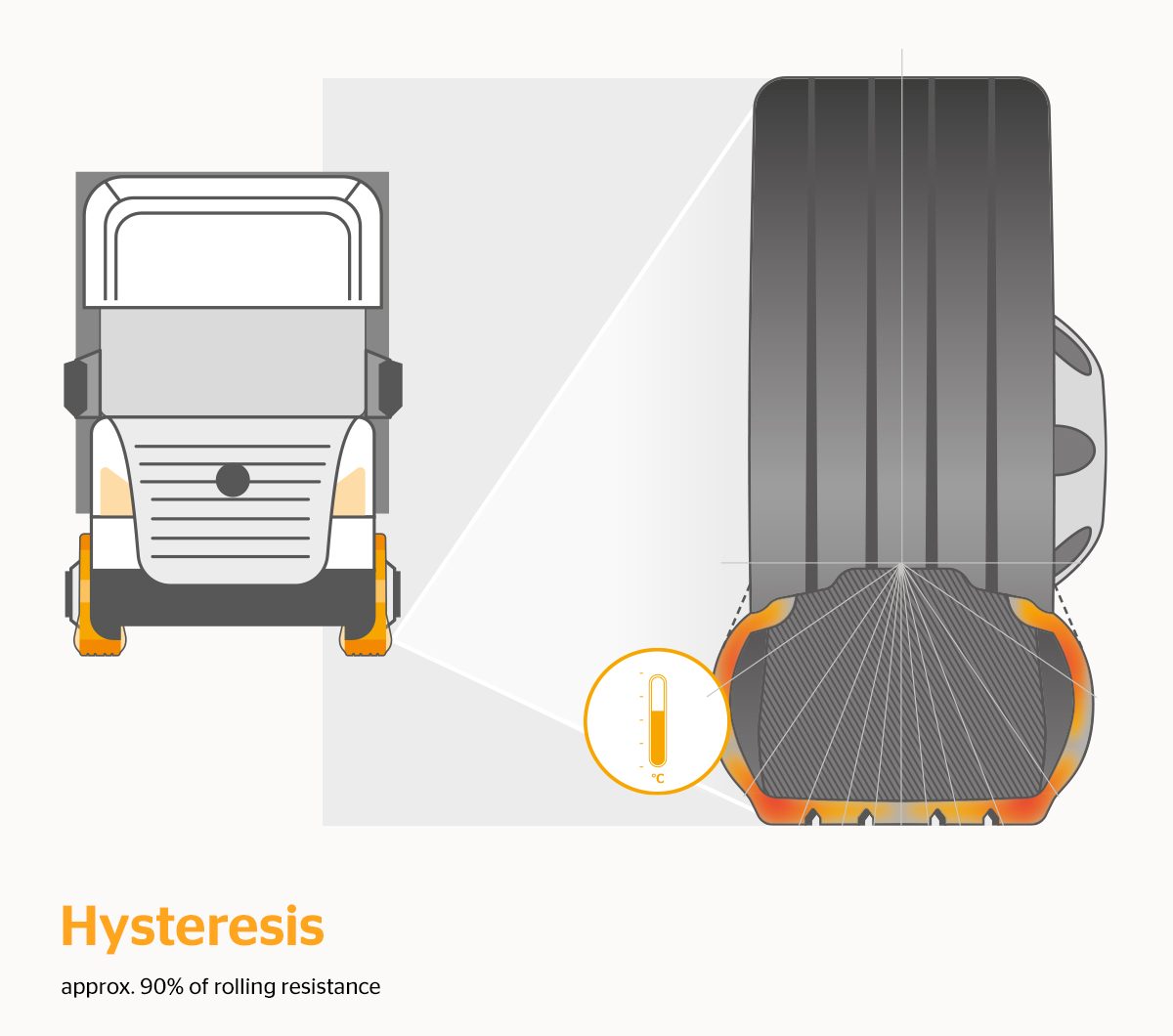# CO₂ Emissions & VECTO
Rolling further for less
Why tire rolling resistance matters
Why tire rolling resistance is key to improve fuel economy and reducing CO₂ emissions
---- https://www.youtube.com/watch?v=C0EevEqmPoE ----
Tire rolling resistance is one of the seven parameters that VECTO uses to calculate a heavy-duty vehicle’s fuel efficiency. Given that it is responsible for up to one-third of a truck’s fuel consumption, understanding how rolling resistance works and what needs to be done to reduce it is critical to lowering carbon dioxide emissions. As well as helping the industry to fight climate change, the improved performance of low rolling resistance tires lets fleet managers and truck owners prepare for impending EU regulations that are expected to make the reduction of CO2 emissions mandatory in the near future. Watch our explainer video for more information on improving fuel efficiency with low rolling resistance tires.
What is tire rolling resistance?
Rolling resistance can be defined as the amount of energy a tire uses over a defined distance. It is one of five forces – along with gravity, aerodynamics, inertia and mechanical friction – that must be overcome for a vehicle to move forward. There are a number of factors that affect rolling resistance: the design, bead, belt, sidewall, tread and inflation pressure of the tire itself, the load and distribution of the vehicle, the road conditions, and the weather. Take a look at our infographic to learn more about the internal and external factors that can be optimized to improve fuel economy, including low rolling resistance tires.
 Continental tire with low rolling resistance
Continental tire with low rolling resistance

How tire manufacturers reduce rolling resistance – and how fleet managers can decrease it further
The most significant factor in reducing rolling resistance concerns hysteresis – the process that happens when a tire flexes as it meets the road surface, leading to an energy loss that inhibits forward momentum. Studies have shown that hysteresis accounts for as much as 85-90% of rolling resistance, so reducing it is a key objective. The majority of the energy that is dissipated through hysteresis occurs via a tire’s tread, largely as a result of the compound used. However, other factors, like tire pressure and alignment, vehicle weight, load and distribution, all have their part to play. The more tire pressure falls below its optimal level, for example, the greater the rolling resistance will be. If a tire on a 22.5-inch wheel is underinflated by 20% from its recommended inflation pressure, for example, the rolling resistance will increase by around 6% compared to a tire with the correct air pressure.
 How hysteresis affects rolling resistance
How hysteresis affects rolling resistance
How to lower the rolling resistance of your Fleet´s tires:
- Consider vehicle weight, load and distribution to avoid excess gravity force on individual wheels
- Check correct wheel alignment
- Check tires for treadwear and possible internal damage, regularly.
- Replace worn tires when necessary
No trade-offs between fuel-efficiency and mileague when choosing a tire
Improving rolling resistance without compromising handling, grip and mileage is a delicate balancing act. Thanks to improvements in technology and production processes, however, reconciling these conflicting targets is possible. There are now a wide range of tires available that use innovative new compounds to decrease rolling resistance while remaining durable, offering high mileage and improving performance in a variety of real-world driving scenarios. The Continental Conti EcoRegional HD3, for example, has an advanced tread pattern with a low-void design, resulting in less deformation and higher mileage, while also delivering optimized handling, grip and wet performance ideal for navigating hilly, windy regional roads.
 Fleet managers decide which truck tires offer the best features
Fleet managers decide which truck tires offer the best features
The importance of tires in the fight against climate change is increasing
Tires have always had a significant impact on everything from reliability and safety to running fleet costs and driver comfort. The fact that they have an important role to play in combating climate change by helping to reduce trucks’ fuel consumption and CO2 emissions is also hardly news. Accordingly, we have always taken inordinate care to produce safe, reliable products that offer the best combination of fuel economy, sustainability and durability.
What’s new is the VECTO rolling resistance certificate on all tires sold to truck manufacturers. For fleet managers, this means that new trucks arrive with improved fuel economy and reduced emission rate. Once emission reduction also becomes mandatory for other contributors to the logistics and transport industry, fleet operators with new VECTO-certified vehicles will already be prepared. Until then, we can help you optimize your fleet’s tires to strike the right balance between rolling resistance and other performance factors.
 The right tires make truck transport more sustainable
The right tires make truck transport more sustainable
